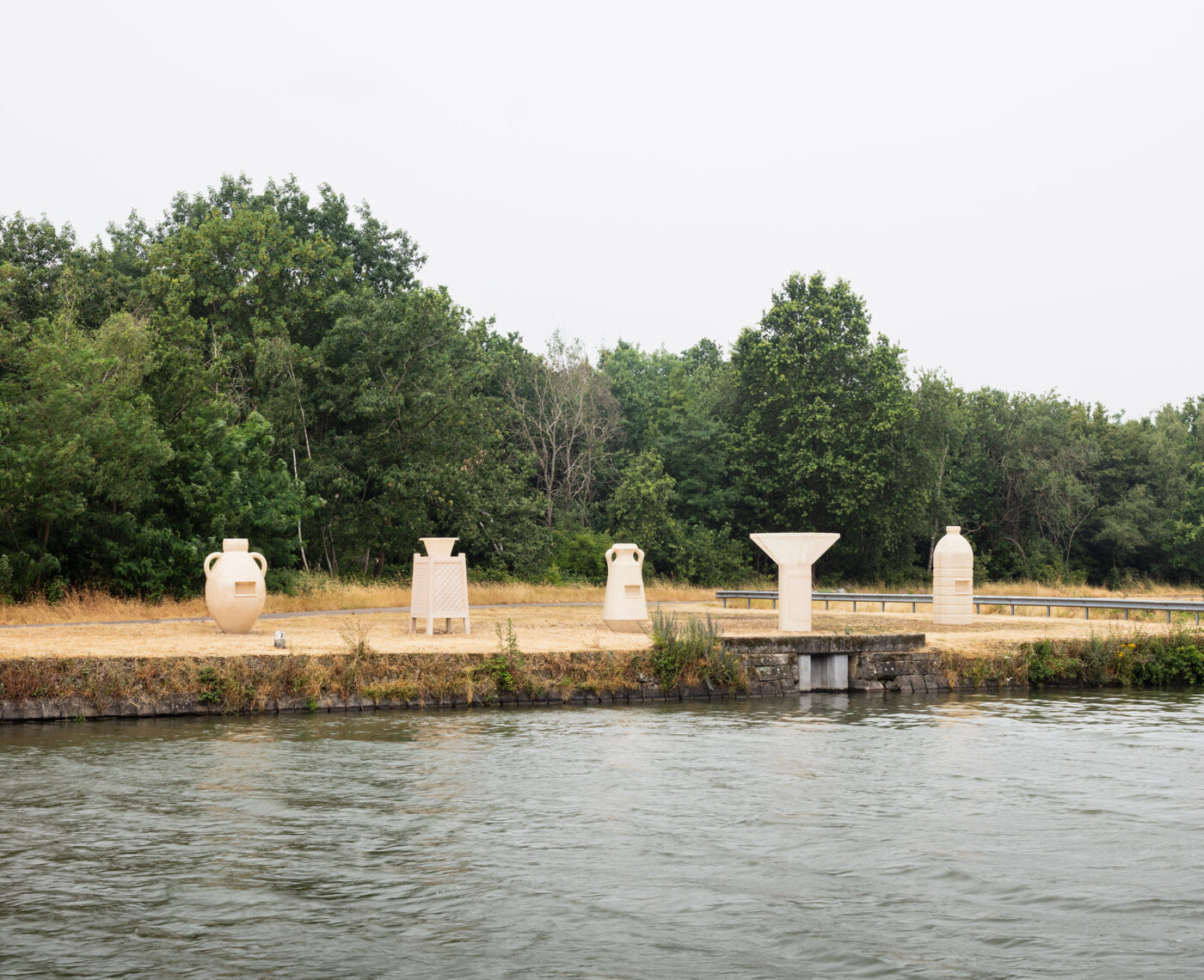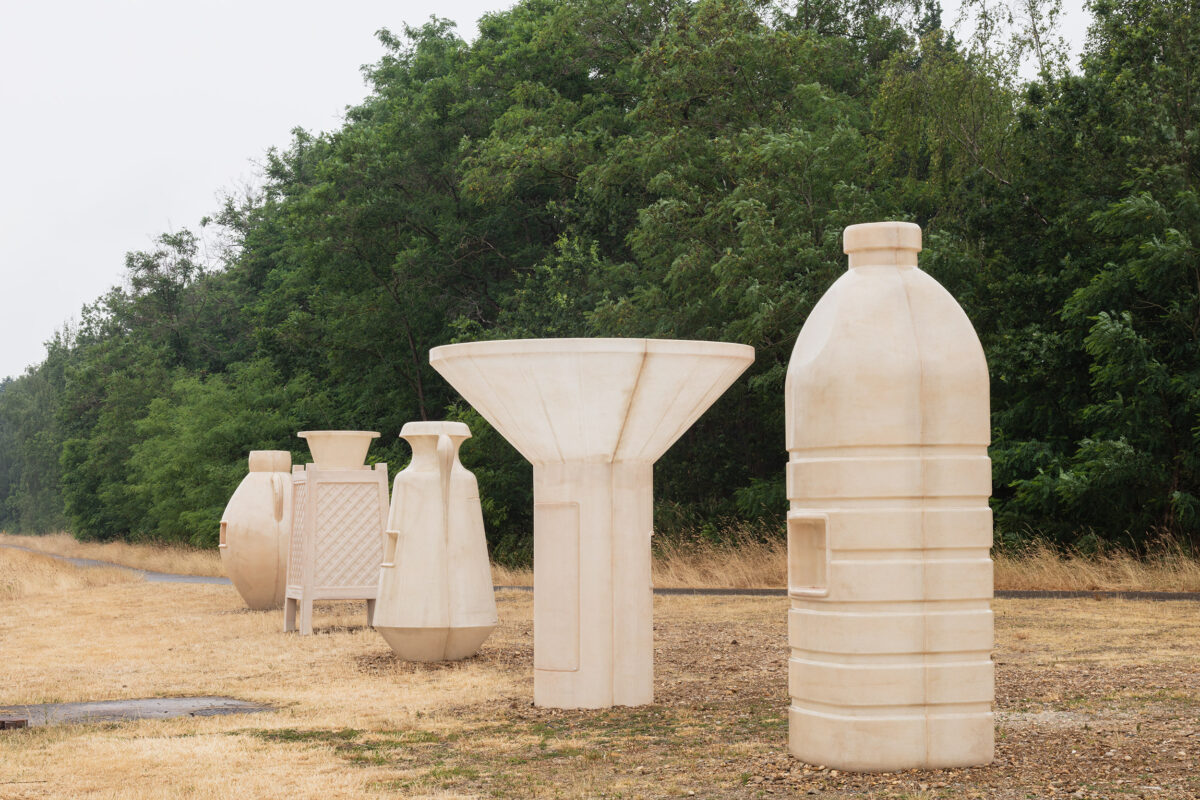With 'Art on the Meuse', Z33 and RLKM are bringing art to the Limburg Meuse Valley. Five artworks will appear in Dilsen-Stokkem, Kinrooi, Lanaken, Maaseik and Maasmechelen. read more

Alia Farid
In Lieu of What Was
Maasmechelen, 50.99702537883187, 5.7089108945344815
“In Lieu of What Was” (2019) is a series of giant fiberglass sculptures based on the public drinking fountains in Kuwait. It is a work by the Kuwaiti-Puerto Rican artist Alia Farid (1985).
Water, or the lack of, is a constant theme in Farid’s work. Water is very scarce in the desert landscape of her native country, the available water is obtained by desalination of seawater.
The sculptures are made with the molds used to make the public drinking fountains, characteristic of the urban landscape of the Arabian Gulf. The fountains are shaped after different water carriers. There is a traditional clay pot, the familiar plastic bottle, a vase-shaped zamzamiya (used for holy water from the Zamzam spring in Makkah), an amphora-like jarrah, a Kuwaiti water tower, and a heb (an evaporative cooling system used to desalinate water ). On the side is a recess to build in a small sink that makes the original purpose of the molds clear. The large drinking fountains, called sabil (Arabic for “toad”), are often paid for by families to honor a deceased person.
Farid connects history, economic development and material culture in a subtle yet compelling visualization of the ecological crisis in the Arabian Gulf and its relentless demands on nature.
The Meuse Valley/Limburg is also experiencing increasing water problems as a result of climate change. While shortages are developing elsewhere, groundwater must be continuously pumped out in the central part of the Meuse valley to keep the ‘mine subsidence area dry. This water is used for the drinking water extraction of many Limburgers. Close to the place where the artwork is located, the remaining water flows into the canal.
In Lieu of What Was invites the audience to reflect on the complexities of water management and the pressing challenges associated with it. The artwork symbolizes the crucial role of water in our daily lives and is a reminder of our responsibility for the sustainable management of this precious resource.


The artwork can be seen from 29.06.2023 until the end of November 2023. The artwork is located at the Maasmechelen passers-by harbour, along the towpath of the Zuid-Willemsvaart in Eisden (parking: Maasmechelen Village; cross the Zetellaan to the canal).
HIKERS
Hikers who like to combine art with physical activity can go for a brisk walk on the red walking route of the Leut hiking area. This 14 km route takes you through the floodplains of the Meuse, the charming village and the castle park of Leut. In Eisden you can take the Kruinenpad, which was built in a subsided area where water is pumped away (‘t Greven). From across the canal you can see the work of Alia Farid.
CYCLISTS
Cyclists will find the artwork between bicycle junctions 55 and 48.
ACCESSIBILITY
The installation is easily accessible by wheelchair. Park at Visit MaasMechelen and then go to the passers-by harbour. The installation is 100 meters upstream.
Under the title ‘From mining town to water city’ you will find more water-related designs that have a link with Maasmechelen in the display case of the Architecture Depot (Langstraat, Eisden-Dorp) during the term of the installation by Alia Farid.
Thanks to the municipality of Maasmechelen and De Vlaamse Waterweg nv.


